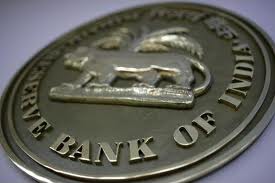 Recently, Fitch Ratings—a credit rating agency—said that Indian banks’ gross non-performing loans (NPL) reached 4.2% for the financial year ending March 2013 from 3.75% in 2011-12. The total stressed assets (including restructured assets) in the system is expected to exceed 10% of total loans by the end of the current fiscal. That is not all. The entire banking industry has restructured 4.68% of loans till March. The top five government banks accounted for 39% and 46% of restructured loans and gross non-performing assets (NPAs), respectively, in FY12. The top five government banks reported a year-on-year increase in gross NPAs of 62%.
Recently, Fitch Ratings—a credit rating agency—said that Indian banks’ gross non-performing loans (NPL) reached 4.2% for the financial year ending March 2013 from 3.75% in 2011-12. The total stressed assets (including restructured assets) in the system is expected to exceed 10% of total loans by the end of the current fiscal. That is not all. The entire banking industry has restructured 4.68% of loans till March. The top five government banks accounted for 39% and 46% of restructured loans and gross non-performing assets (NPAs), respectively, in FY12. The top five government banks reported a year-on-year increase in gross NPAs of 62%.
These are warning bells that should not be ignored.
It is well known that NPAs rise as economic growth contracts. What is of concern, however, are the lending practices of government-owned banks that have a role to play in the rising tide of stressed assets.
An analysis of available quarterly data from Bloomberg, a financial database, on credit growth of various groups of banks clearly suggests that poor lending practices cannot be ignored anymore. Consider this: The standard deviation of credit growth, June quarter 2008 onwards, of foreign, new and old private sector banks is 13.15, 9.51 and 6.26, respectively, whereas comparable figures for the State Bank of India (SBI) Associates and nationalized banks remains at 1.87 and 4.10. Standard deviation is a measure of the dispersion of a set of data from its mean, which implies that more volatile the data elements are, larger the standard deviation is. What this shows is that even during a crisis period—when private banks were far more cautious in their lending practices—state-owned banks continued lending in a business as usual fashion.
So far, matters have not spun out of control. However, one can question the wisdom of using state-owned banks as a short-term counter cyclical tool by the government because the end result of such “directed” lending very often is the piling up of NPAs at the end of a business cycle. The travails of banks lending to power utilities and other sectors where NPAs have piled up after the run of “good times” shows this clearly. Instead, the government should put its faith in its central bank, which should use macro prudential bank regulation such as pro cyclical capital requirements and other monetary policy measures, which are more effective to act as counter cyclical tools.
Should the government own banks?
